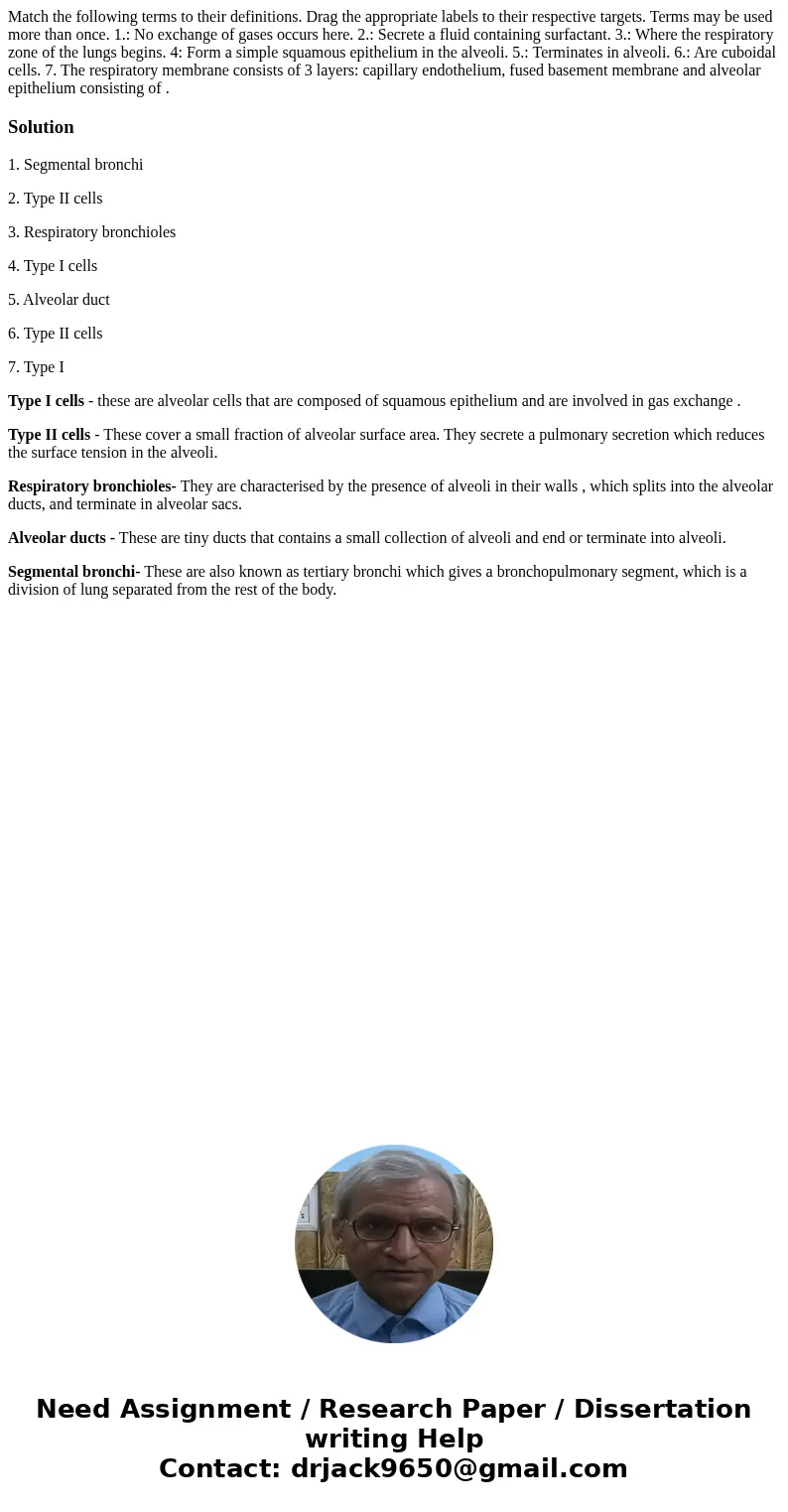Match the following terms to their definitions Drag the appr
Solution
1. Segmental bronchi
2. Type II cells
3. Respiratory bronchioles
4. Type I cells
5. Alveolar duct
6. Type II cells
7. Type I
Type I cells - these are alveolar cells that are composed of squamous epithelium and are involved in gas exchange .
Type II cells - These cover a small fraction of alveolar surface area. They secrete a pulmonary secretion which reduces the surface tension in the alveoli.
Respiratory bronchioles- They are characterised by the presence of alveoli in their walls , which splits into the alveolar ducts, and terminate in alveolar sacs.
Alveolar ducts - These are tiny ducts that contains a small collection of alveoli and end or terminate into alveoli.
Segmental bronchi- These are also known as tertiary bronchi which gives a bronchopulmonary segment, which is a division of lung separated from the rest of the body.

 Homework Sourse
Homework Sourse